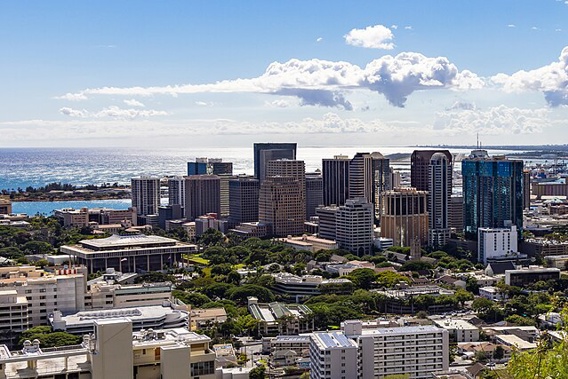
Hawai'i's turquoise waters and sandy beaches have a siren-like pull on travellers from all over the world. But in between basking in the pleasures of Waikiki’s beach scene, take a dip with the rich heritage and cultural grandeur of Honolulu. The capital city has more than 20 diverse neighbourhoods, spanning beachfront Kahala and lush Mānoa to historic, commercial and retail districts like Ala Moana, Chinatown and Kaka'ako.
To gain a better appreciation for Hawai'i's complex history, I enjoyed a great visit to 'Iolani Palace – the only true royal palace in the United States. This opulent palace was the only structure in the world built in the "American Florentine" style, serving as the official residence of Hawaiian monarchs in the late 19th century. It was remarkably sophisticated for its time – equipped with electricity before the White House. 'Iolani Palace remains a potent symbol of Hawai'i being its own nation and where their last queen (Queen Liliʻuokalani) was imprisoned after the overthrow of the monarchy in 1893.
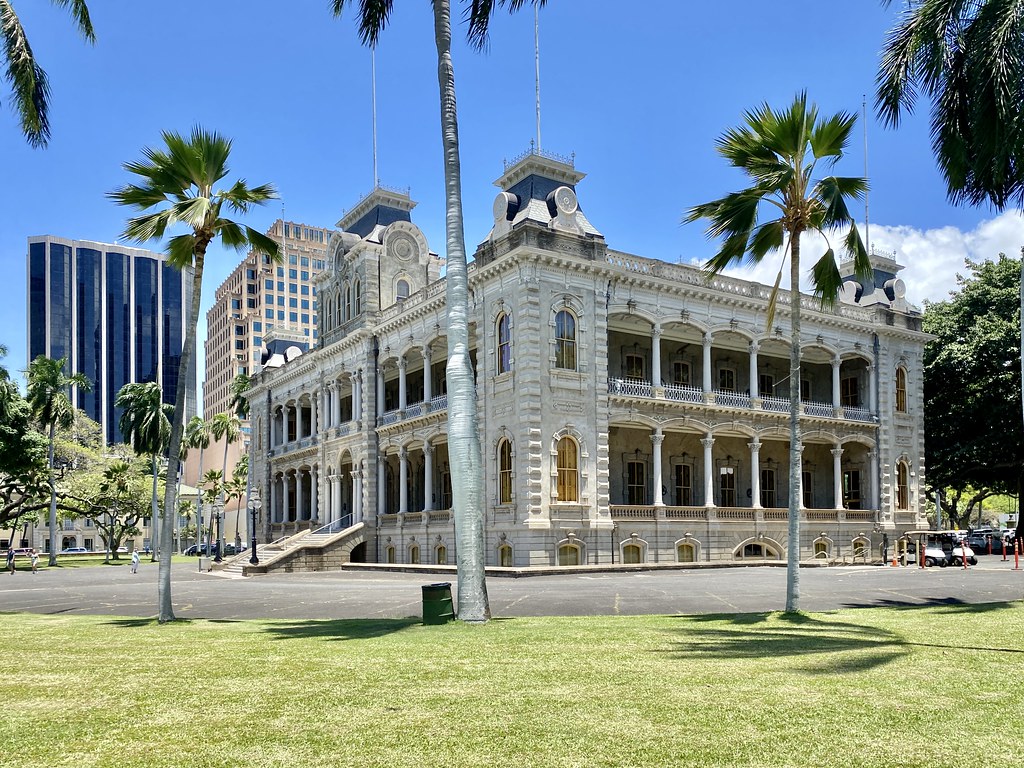 'Iolani Palace, Honolulu. Photo / Supplied
'Iolani Palace, Honolulu. Photo / Supplied
Visitors can walk through the first and second floors, which include reception rooms and bedrooms, as well as Queen Liliʻuokalani's Imprisonment Room, where she was held under house arrest for nearly eight months after her government was overthrown by the US. Across the road is the glorious statue of Kamehameha the Great, in front of the state supreme court. This magnificent 18-foot statue of King Kamehameha I was dedicated in 1883, commissioned by King Kalākaua. He wanted to commemorate the 100th anniversary of first contact with the outside world.
The sculpture was cast in bronze in Paris, then placed on a ship. However, as fate would have it, disaster struck. The ship sank in shallow water near the southeastern tip of South America. Thankfully, King Kalākaua had taken out insurance, and a second sculpture was commissioned right away. Remarkably, some Falkland Island natives actually retrieved the first statue from the bottom of the ocean, and it was once again on its way to Hawai’i before the second sculpture was even completed! So the original statue was placed in Kapa‛au, on Big Island, near the birthplace of Kamehameha. And the replacement statue is what you see in Honolulu.
The Bishop Museum, the state museum, is another treasure trove to help you understand the evolution of the islands and the Hawaiian people.” Named for Princess Bernice Pauahi Bishop, a philanthropist who was the last descendant of the Kamehameha royal family, the museum offers insight into pre-contact Hawai’i, as well as the forced abdication of its final queen, Lili’uokalani. Check out the model of a heiau or sacrificial temple; the colourful feathered capes, leis and helmets; the kapa barkcloth blankets; the wall of antique poi pounders; the sperm whale skeleton hanging from the ceiling; and find the costume alcove where you can try on styles inspired by the Pacific islands including, yes, grass skirts. A planetarium shows the stars that guided epic Pacific canoe voyages, while a large hall explores creation stories, the wao (realms) of Hawaiian life and historical chapters such as the grisly fate of Captain Cook.
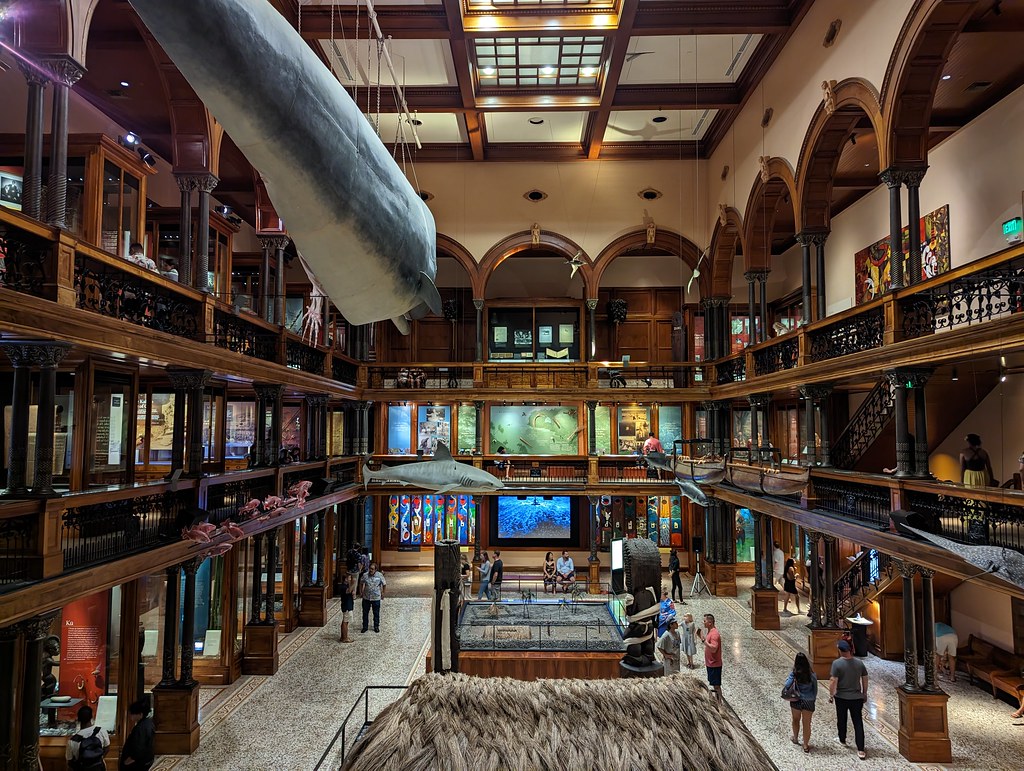 Central Hall of Bishop Museum. Photo / Supplied
Central Hall of Bishop Museum. Photo / Supplied
Chinatown is a distinct central city neighbourhood, where the tussle between the traditional and the trendy is evident. It’s a mash-up of grit and gentrification, soundtracked by the clunk of cleavers chopping pork belly in old-school markets. This is where Second World War sailors were inked with the motto “stewed, screwed and tattooed.” Within Chinatown’s grid-like layout, you can spot a few examples of the low-rise Italianate brick or white stucco and corniced buildings that pre-date a devastating fire in 1900.
I love the colourful neon marquee at the refurbished 1922 Hawaii Theater. Take in the colours and tuberose-heavy scents at lei stands where floral necklaces are still strung by hand and note the steamed bun sign at Char Hung Sut where hand-formed dumplings are sold early in the day at about $1 a pop. Chinatown offers an enduring glimpse of the culture that developed after migrants, originally recruited in the 1850s to work in sugar plantations, left those jobs to open their own businesses. After dark, hit up Hotel Street at least once. Smith’s Union Bar is the island’s oldest operating bar; and Bar 35 has a beer garden and pupus (snacks) including deep-fried bread pudding.
Nearby, Kaka’ako is an old warehouse district. It’s a rapidly changing neighbourhood buzzing with street art, independent shops and an art deco atmosphere. Mosey around the 100 or so murals radiating out from Lana Lane (artists include Shepard Fairey and Kevin Lyons) before hitting the indie stores and restaurants of SALT at Our Kaka‘ako. The city’s POW! WOW! Hawaii festival, a week-long series of art events, takes place every February.
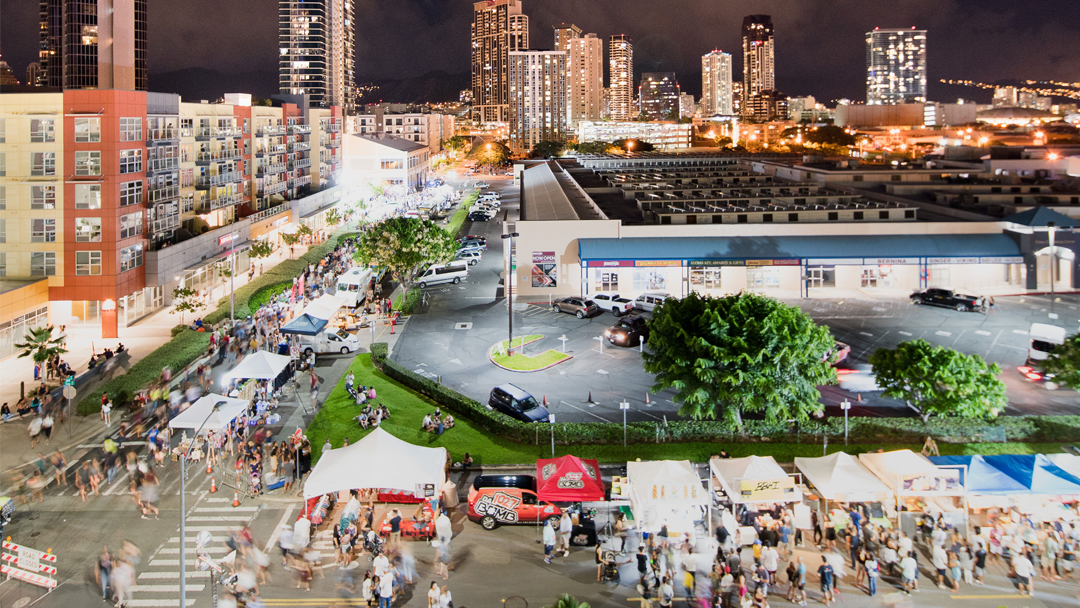 Kaka'ako District, Honolulu. Photo / Supplied
Kaka'ako District, Honolulu. Photo / Supplied
On the outskirts of Chinatown is Foster Botanical Garden, a tranquil oasis in the heart of urban Honolulu with magnificent displays. Close by, pop into the Cathedral of Saint Andrew. Founded in the 1860s, termite damage to the wooden construction triggered a huge wall of stained glass to be installed in the 1950s. The great west window, as it’s called, depicts a variety of biblical scenes, but best of all, the very top of the left panel features a scene of Jesus on a surfboard! Aloha.
Still the most popular visitor destination in Hawaii, Pearl Harbor is an essential experience. Lines start forming as soon as the sun rises. The centrepiece is the USS Arizona memorial, which floats above the sunken vessel aboard which 1,177 sailors were killed in the Japanese attack on Pearl Harbor in 1941.Leaking oil from the wreckage still bubbles up to the surface. Docked next door is the Mighty Mo – the USS Missouri is the only ship to have fired her guns in both World War II and the First Gulf War. The Empire of Japan formerly surrendered on her decks on September 2, 1945, in Tokyo Bay.
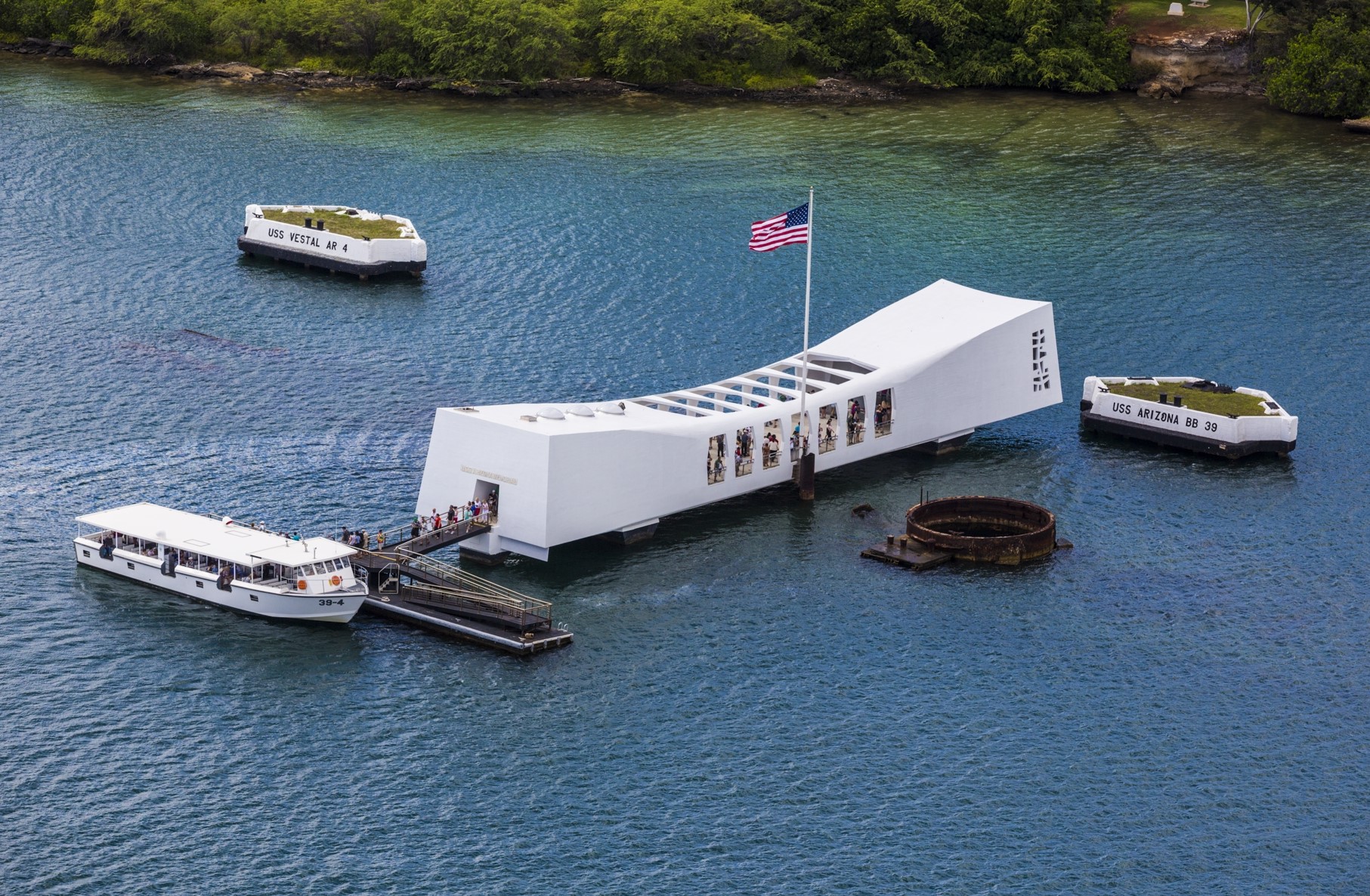 Pearl Harbor Memorial. Photo / Go Hawaii
Pearl Harbor Memorial. Photo / Go Hawaii
Sticking with the war theme, Punchbowl Cemetery is the final resting place for more than 53,000 veterans and their families, including those who served in World War II. Established in 1949 on the slopes of Punchbowl Crater, it is one of the most unique cemeteries in the world due to its location atop an extinct volcano. One of the most celebrated gravesites is that of President Barack Obama’s grandfather, Stanley Armour Dunham. During World War II, he fearlessly served as a sergeant in the U.S. Army, enlisting right after the notorious attacks on Pearl Harbor. In addition to paying respects to the fallen, the sweeping views back to Honolulu’s skyscrapers are magnificent.
Speaking of views, for the best vantage point overlooking east Honolulu and the coastline, make tracks for Nu'uanu Pali Lookout. The site also features breathtaking views of the strikingly corrugated Ko'olau Mountains. The Pali Lookout also has an epic yet deadly history; in 1795, the now-peaceful site served as the battlegrounds where the monarch, warrior and diplomat King Kamehameha I won the Battle of Nu'uanu, a victory that united Oahu and sent hundreds of soldiers directly off the 305m high cliff to their death. https://www.gohawaii.com
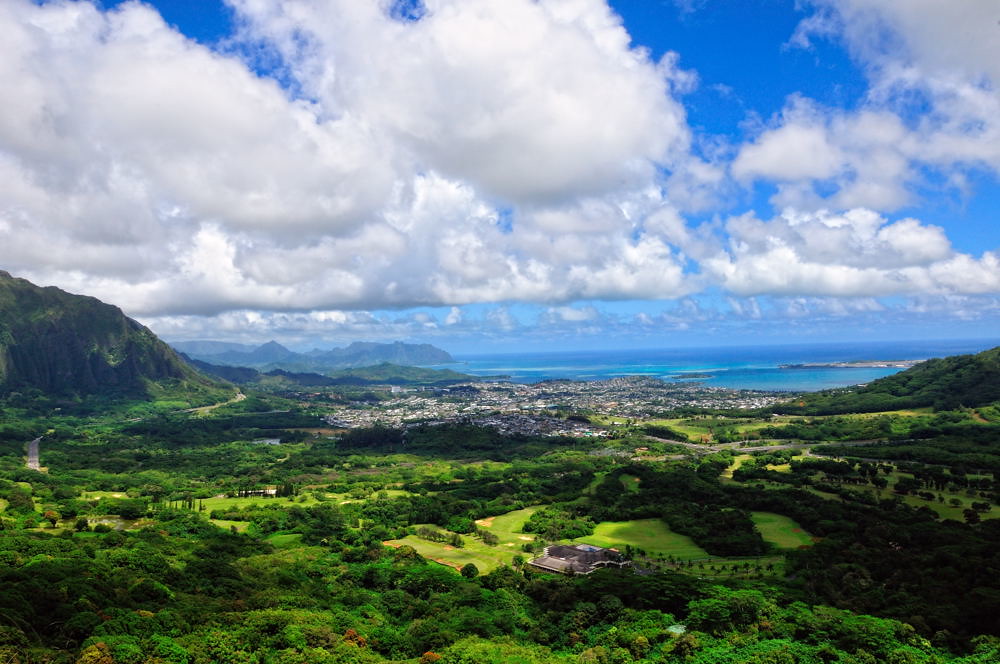 Pali Lookout. Photo / Supplied
Pali Lookout. Photo / Supplied
Virtually all these locations can be reached by jumping aboard the Waikiki Trolley. The hop-on, hop-off operator is the hassle-free, affordable way to zip around Honolulu and beyond, with a high-frequency schedule on four different lines. The live on-board commentary is illuminating and entertaining. Book a pass to suit your needs, from one day to a week. www.waikikitrolley.com
Fly Hawaiian Airlines to Honolulu from Auckland. The widely acclaimed carrier is set to return to our skies, with direct flights resuming on November 15, through to April 30. Hawaiian Airlines connects to 16 US mainland cities, with the option of enjoying a stopover on the Hawaiian Islands in either direction, with fantastic island-hopping connectivity. Hawaiian Airlines’ Extra Comfort seats on the Airbus A330 offer considerably more legroom, priority services and enhanced amenities to make your long-haul travel experience decidedly more indulgent. You can also enjoy complimentary high-speed Starlink Wi-Fi, which is being rolled out across all its A330s by the end of the year. If you’re shopping up a storm, you’re in luck - Hawaiian offers economy passengers a generous 32kg luggage allowance. For sharply priced fares and flights to suit, head to www.hawaiianairlines.co.nz
Mike Yardley is our resident traveller on Jack Tame Saturday Mornings.
Take your Radio, Podcasts and Music with you









